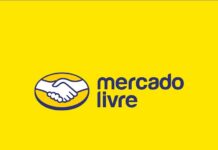Cássio Simões
The year 2020 will be marked as one in which much has changed, from general population habits to business models. Transformations and processes that were still taking shape in some way were accelerated from the beginning of the new coronavirus pandemic, through social distancing measures to the redesign of corporate plans and strategies. In the packaging industry, fundamental changes can already be seen – particularly for manufacturers providing filling solutions for the food and beverage sector.
With guidelines to restrict travel and temporarily close shops, e-commerce channels have experienced strong growth in recent months. According to a survey by Compre&Confie, online purchases grew 71% in revenuesfrom February 24 to May 24, compared to the same period last year. With growth of 222%, the food and beverage category was the second fastest growing.

From the perspective of the packaging industry, the advancement of the food and beverage trade on digital platforms opens a new range of opportunities for the industry. With more people experimenting with the online supermarket, new challenges arise with regard to the product distribution chain. With more points of friction, e-commerce logistics tend to be larger and more aggressive.
Bearing in mind that packaging is the brand’s first point of contact with the consumer, the packaging aspect becomes fundamental to the consumer experience. The delivery of a product in a crumpled or violated packaging can be decisive so that the consumer never repeats that experience again. After all, the packaging is what ensures the protection of the food and what gives the consumer the assurance that the product inside is preserved. Working with packaging that equates robustness, safety and lightness are some of the aspects that gain greater importance because of the growth of e-commerce platforms.
However, the advancement of the online supermarket does not mean the end of physical stores. On the contrary, because of the social distancing measures the neighborhood stores are also experiencing strong growth during the pandemic. According to Kantar, 75% of Brazilians have preferred to shop in supermarkets near their homes, which translates into some opportunities for the packaging industry.
At the same time that the consumer has given preference to shopping at neighborhood markets, he continues to avoid exposure to the virus that causes Covid-19. Because of this, many families have chosen to reduce the number of trips to the market, making them make bigger purchases and last longer. This means that packages that protect food for a longer period end up gaining the preference of the consumer, since in addition to protecting the product they provide a new type of practicality in the current context: avoid constant outings or exposures.

At the same time, with consumers increasingly seeking information about the products in their hands, the packaging itself can serve as a communication channel for brands. Unique identification codes printed on the packaging can be scanned by cell phone cameras, providing more information about the product, as the origin of the ingredients used or promoting new models of consumer interaction.
In addition, package connectivity adds an extra layer of security and intelligence to the industry. By scanning the identification codes, it becomes possible to track the product throughout its entire life cycle. For example, food and beverage manufacturers can track the product’s position within the distribution chain, understand more quickly where inventory swings are occurring, and track product performance on the shelves. In the case of recall actions, product recall is also faster, as the identification of specific batches takes place in a matter of a few hours.
If marketing and sales teams understand the importance of data for strategy formulation or adaptation, connected packaging serves as an important tool for monitoring product performance in retail and evaluating new distribution strategies.
Finally, it should be considered that the changes imposed by Covid-19 do not represent the abandonment of valued aspects in the composition of packaging until before the beginning of the pandemic. For example, concern for sustainability will remain an important driver in the consumer choice process. The understanding that the packaging in their hands is recyclable and composed of materials obtained from renewable sources will continue to be a purchasing differential, with the change that, from now on, this aspect will be added to so many others brought by the pandemic.
Still under the focus of sustainability, one aspect reinforced by the current health crisis is that the consumer is increasingly sensitive to the needs of other people and giving greater importance to conscious consumption – that which generates environmental or socioeconomic benefits for populations in vulnerable situations. Aware of the importance of recycling for the planet and for thousands of people who depend on this activity, the recyclability of packaging becomes more important in the consumer’s choice process.
In general, all the changes noted in the packaging industry had already begun to take shape in recent years. We do not necessarily speak of major changes on the horizon, but of transformations that have been accelerated by the pandemic and will require some level of adaptation on the part of manufacturers of filling solutions and producers of food and beverages. If consumption habits have been reshaped in recent months, then this means that they must also be considered in our industry.
Cássio Simões is the sales director of Tetra Pak Brazil. He has a degree in Chemistry from Universidade de São Carlos, a Master in Administration from INPG Business School and an MBA in Project Management from Fundação Getúlio Vargas (FGV). Cassava has accumulated more than fifteen years in the packaging and food and beverage industry.



















